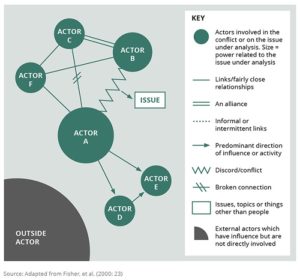
In lock-down it can be a challenge to differentiate one day from the next. We’ve all been a bit less fastidious with our general presentation and dress and we have become very used to the domestic backdrop we observe as we Zoom with colleagues and clients.
One of the things I wisely grabbed as we prepared to relocate for lock down was my glasses collection. It is substantial. Two pairs a year for my 30 years of bad vision – you do the maths!
Strangely enough, my glasses have had a really positive effect as I have moved the early intervention space, where my work is focussed, to an online world. Let me explain.
The early intervention space is an intimate one. The decision to enter and participate often requires the facilitator to invest significant time and patience. Apprehension and reluctance are not confined to the parties. Sometimes the parties’ advocates are wary or resistant and need time to reflect and be persuaded before overcoming their discouragement.
Trust is the first hurdle.
The second is engagement.
In person, sharing oxygen, tea and a pleasant environment often creates the chemistry that promotes intimacy and a willingness to engage wholeheartedly – even for the most conservative and tight-lipped business people.
Trusting a stranger is challenging at the best of times but it is even more challenging in a completely online environment.
My glasses have rescued me. In a two dimensional screen-based world, everything is up close and personal and the scrutiny can be uncomfortable. Suddenly my daily ‘changing of the frames’ has become memorable and a great vehicle for small talk and ice-breaking. Clients love the stories about where each pair came from and they even have favourites they ask me to wear again! ‘Changing the frame’ has promoted engagement in ways that are continuing to surprise me. A CEO of a major entertainment business has asked me to take him glasses shopping when this might be possible once more.
I’ve been reflecting on this as I enjoy my daily walks. It suddenly occurred to me that there were other opportunities to ‘change the frame’ and promote deeper engagement online. I wondered if increasing the emphasis on ‘doing things together’ online would be another way to get the benefit of changing the frame and re-energising conflict exploration, which can easily become lifeless online.
A post from my fellow blogger Rick Weiler was a good example of finding new value in familiar tools – this led me to revisit the conflict mapping tool I had been playing around with for a while.
Working with Conflict was where I had drawn my ideas and many of you will remember its familiar application (reproduced below) which has appeared in many articles on conflict mapping. I was reminded of the possibilities it might offer in a February 2020 OmBuzz blogpost by Teresa Ralicki from the University of Colorado just as Australia was beginning to think of life in lock-down.

However I had not experienced a lot of success with this work. The ideas were very attractive to me but there was a lot of push back from business clients in complex, multi-party disputes, who reported that the language seemed contrived and not related to the commercial world.
Enter another changing of the frame – perhaps the problem was in the presentation and design, not in the tool itself, so I needed a more appealing frame.
Our family Zoom celebrations have been characterised by an ongoing competition for who can find the most hilarious and inappropriate Zoom virtual background. We have all found clever software tools to manipulate images. Here was the answer. Much experimenting later, I have come up with a great, user-friendly online design tool that clients are adopting well.
During a Zoom call I give them an explanation of why it can be valuable to create a conflict map together. I introduce them to the design tool by sharing my screen. I have chosen a tool called Canva. There are many others. It has indeed created an opportunity to move from the ‘talking and listening’ space to the ‘working together on a co-creation’ space and it feels much more energised and productive than the usual two dimensional online sessions.
I offer below a de-identified example of a map in progress that has been developed by some clients with whom I have been working to explore a very complex conflict involving a web of family businesses and external parties. This has led them to decide to work on some sub-maps which explore some of the elements more deeply.

For example, the ‘Resolution’ element has turned into a very useful decision tree which is helping some of the key players in the conflict to recognise the consequences of not engaging in resolution. It is a work in progress and I notice they are continuing to return to the tool offline.
As we begin slowly to emerge from lock-down I can see that some of the skills I learned there are valuable and this is certainly one I am going to continue when life becomes face-to-face again.
________________________
To make sure you do not miss out on regular updates from the Kluwer Mediation Blog, please subscribe here.



Excellent sugestion Rosemary. It is challeging build a positive and engaiging rapport in this circumstances.
Henrique Gomm Neto – henrique@gomm.com.br
Thank you for sharing the ‘changing frames’ for interactions with our clients especially in the early stages building trust and rapport through personal connectors and a medium for creating that third (shared) space.
Loved the way you intrigued us with that amazing glasses set! And I love the notion of sharing oxygen and tea in creating a calm space to connect.
I must check out Canva.
Thank you for your stimulating and thought provoking post 😊👋